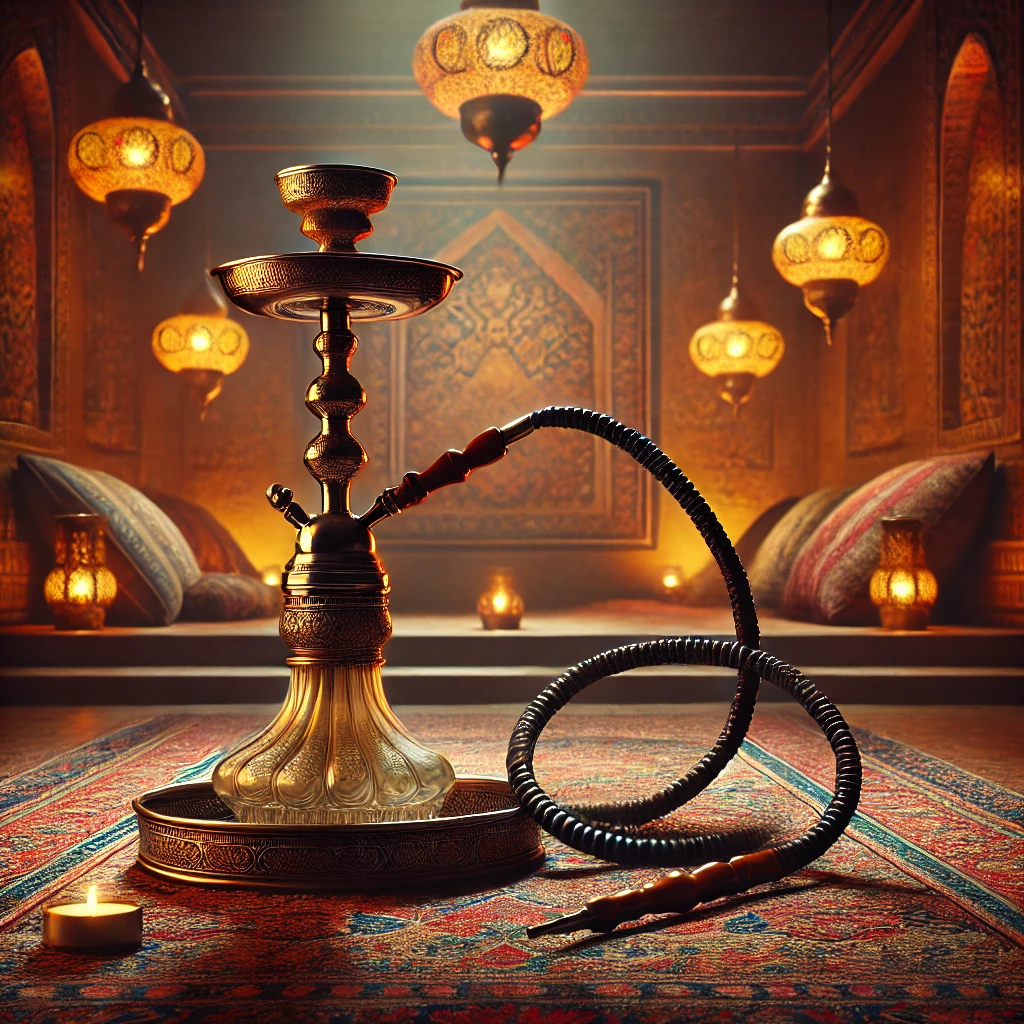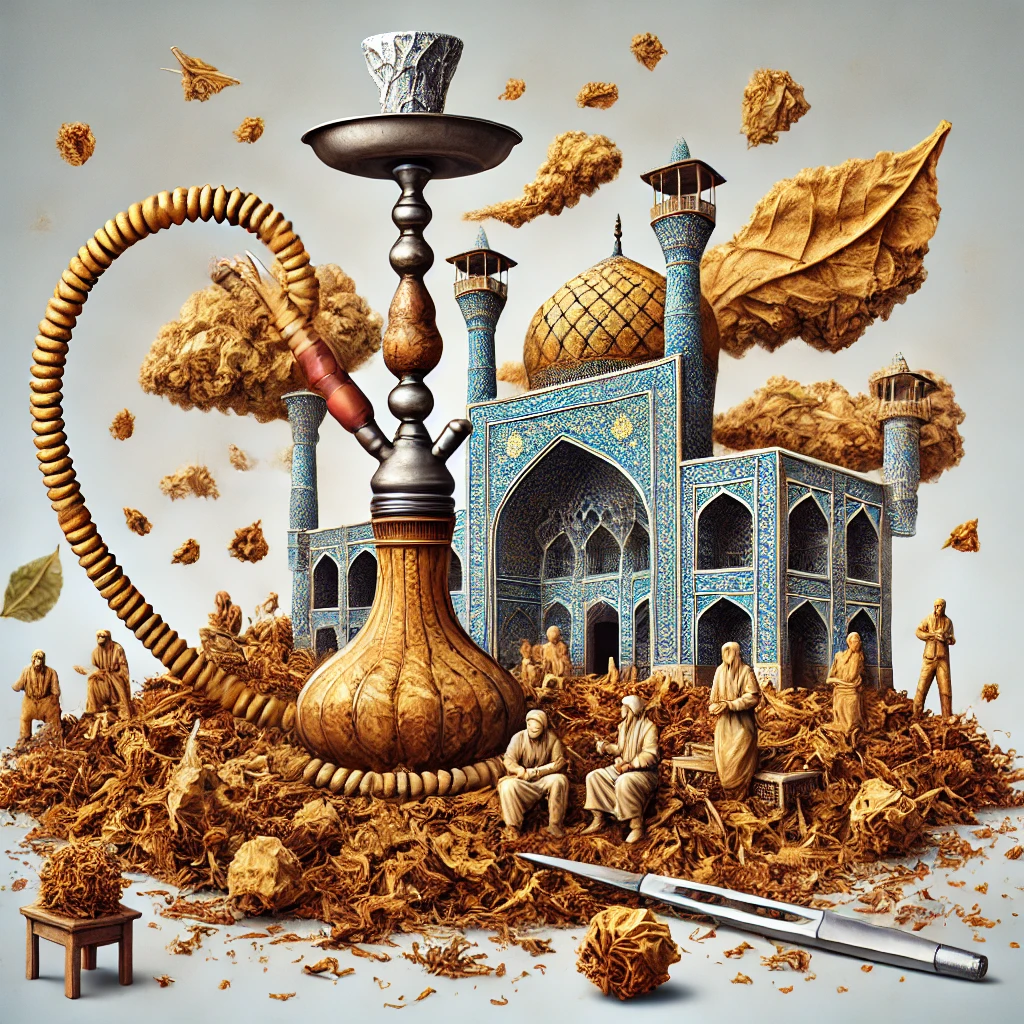The evolution of tobacco in the Persian Empire showcases its significant impact on cultural practices. Initially, tobacco faced resistance from religious and political leaders. Yet, it gradually transformed into a cherished social practice, particularly through the use of hookahs. This transformation reflects broader societal changes that influenced cultural practices over time.
Tobacco’s role in Iran highlights its intricate connections with social dynamics. As can be seen, hookah smoking became a vital part of community bonding. Moreover, fostered social interaction but also influenced local customs and traditions. These interactions played a crucial role in shaping community identities and values.
Equally important, the economic impact of tobacco in the Persian Empire cannot be overlooked. The tobacco industry evolved into a significant sector, generating discussions about health and morality. Therefore, the cultural significance of tobacco extends beyond mere consumption, enriching social gatherings and rituals.
In contemporary times, the perspective on tobacco use in Iran reflects a tension between tradition and health awareness. Although hookah lounges thrive, increasing health concerns prompt a reevaluation of smoking habits. In the meantime, the tobacco industry adapts to regulatory challenges and changing public attitudes, navigating the complexities of modern society.
Discover How the History of Tobacco in the Persian Empire Revolutionized Hospitality Traditions
The 16th century marked a pivotal moment for tobacco, reshaping hospitality customs in the Persian Empire. This period marked a significant shift in how communities engaged with tobacco, particularly through the use of hookahs. This shift not only changed social practices but also redefined hospitality norms across the region.
In the 16th century, tobacco made its way into the Persian Empire, following its introduction from the Americas. However, the general populace began to embrace tobacco, particularly through the use of waterpipes, known as hookahs. In this situation, hookah smoking became a popular social activity, fostering community bonding and interaction. Such activities contributed to a sense of belonging and cultural continuity among the people.
In a word, the hookah emerged as a symbol of hospitality in Persian culture. It represented gatherings where friends and family could come together to share stories and enjoy each other’s company. By the same token, the practice of smoking shisha evolved, incorporating a variety of flavors that enhanced the overall experience. Consequently, this cultural integration of tobacco enriched social interactions and contributed to the unique identity of Persian hospitality.
Additionally, the Persian Empire’s extensive trade networks played a crucial role in the spread of tobacco. These trade routes allowed for diverse varieties of tobacco to be cultivated and enjoyed across the region. As a result, the history of tobacco in the Persian Empire reflects a rich tapestry of cultural exchange and adaptation. The development of smoking practices, especially with hookahs, demonstrates tobacco’s integration into social traditions.
As time progressed, the relationship between tobacco and society in Iran continued to evolve. The introduction of cigarettes in the 19th century marked a significant shift in tobacco consumption patterns in Persia, further diversifying the ways in which tobacco was enjoyed. The popularity of hookah lounges surged, creating spaces for socializing and relaxation. However, health concerns began to emerge, prompting a reevaluation of smoking habits. Nevertheless, the cultural significance of tobacco persists despite this, even if the health risks are acknowledged.
Tobacco’s Dark Legacy in Iran’s Rich Cultural Tapestry
Tobacco’s integration into Iranian culture has profoundly influenced social customs and economic practices, raising important health discussions. This relationship has evolved significantly over the centuries, reflecting both tradition and modernity. The complexities of this relationship highlight the challenges faced by societies in balancing health and cultural practices. As tobacco became a staple in social interactions, it transformed leisure activities and community gatherings.
Ultimately, tobacco has become a fundamental aspect of Persian culture, affecting social customs and leisure pursuits. To clarify, the history of tobacco in Iran reflects a complex relationship between tradition and modernity. After that, the introduction of cigarettes in the 19th century further transformed tobacco consumption patterns in Persia. In particular, the emergence of various nicotine products has also contributed to the diversification of tobacco consumption in Iran, allowing for new experiences and preferences among users. Regardless, the health risks are acknowledged, the cultural significance of tobacco persists. This persistence underscores the deep-rooted nature of tobacco in social customs and daily life.
Up against these challenges, the tobacco industry in Iran adapted, promoting its products through cultural narratives. The development of smoking practices, especially with hookahs, demonstrates tobacco’s integration into social traditions. This ongoing dialogue about health awareness and cultural significance remains relevant in contemporary society.
Tobacco’s Hidden Role in Shaping Persian Culture and Society
Tobacco’s historical significance in the Persian Empire underscores its deep impact on social customs and cultural practices. This journey showcases how tobacco, particularly through hookah, became a vital part of community life. This vital role illustrates the intertwining of cultural practices with social interactions over time.
Without reservation, the legacy of tobacco in the Persian Empire is a testament to its enduring impact on social life. As noted, the evolution of tobacco use reflects broader historical trends within the region.
Up to the present time, tobacco remains a significant aspect of social life in Iran, particularly in the form of hookah lounges. These lounges serve as gathering places where friends and family come together to enjoy shisha and share stories. To create a more inclusive environment, many lounges now emphasize a smoke-free atmosphere for non-smokers, allowing everyone to enjoy the social aspects of gatherings without the health risks associated with tobacco. This shift reflects a growing awareness of health issues while maintaining cultural traditions.
Inasmuch as tobacco has evolved, it continues to be a topic of interest in discussions about health and culture in Iran. The ongoing dialogue about tobacco use reflects the complexities of modern life, as individuals navigate between cultural traditions and health awareness in their smoking habits. Summing up, the history of tobacco in the Persian Empire is marked by its transformation from a controversial substance to a cultural mainstay.
On the positive side, the popularity of hookah lounges illustrates how tobacco has become intertwined with social customs. These establishments furthermore offer a variety of flavors but also foster community bonding. As much as tobacco has faced scrutiny, its role in social gatherings remains significant.

History of Tobacco in the Persian Empire Transformed Social Gatherings into Unforgettable Experiences
In the heart of Iran, gatherings often revolve around the ritual of hookah smoking. Friends and family come together, sharing stories and laughter over fragrant shisha. This practice highlights the cultural significance of tobacco consumption in fostering social bonds. Such gatherings serve as a testament to the enduring nature of these traditions in Iranian society.
Of course, the cultural significance of tobacco in Iran extends beyond mere consumption; it embodies social interaction and community bonding. Accordingly, gatherings around hookah smoking are common, serving as a backdrop for conversation and connection among friends and family. Equally important, the flavors of shisha reflect regional tastes, with many local ingredients being used to create unique blends.
Although tobacco use has faced criticism, it remains a cherished tradition in many Iranian households. Important to realize is that the act of smoking hookah is often accompanied by rituals, enhancing its cultural value. As shown, the integration of tobacco into Persian culture has led to the establishment of dedicated spaces, such as cafes and lounges, where people can enjoy this pastime. These spaces not only facilitate social interaction but also preserve cultural heritage through shared experiences.
That is, the social aspect of tobacco consumption is as significant as the product itself, fostering a sense of belonging. To explain, the popularity of events like karaoke and open mic nights at lounges often coincides with hookah smoking, creating a lively atmosphere. This vibrant social scene illustrates how tobacco consumption continues to shape community interactions in modern Iran.
What Happens When Tobacco Meets Iran’s Vibrant Culture
How does the relationship between tobacco and culture in Iran reflect historical significance and contemporary societal attitudes? This connection reveals the complexities of social customs and health awareness in modern Iranian society. Understanding these complexities is essential for grasping the nuances of cultural practices today.
Understanding tobacco’s historical context in Iran sheds light on current perspectives regarding smoking and health. The evolution of tobacco use illustrates how deeply ingrained it is in Persian culture. Because of its deep roots in this culture, tobacco continues to be a subject of fascination and debate. The tobacco industry in Iran has adapted to modern challenges, including health regulations and changing social norms.
So that the cultural practices surrounding tobacco remain vibrant, many lounges emphasize a smoke-free environment for non-smokers. This approach allows for inclusivity while preserving the social aspects of tobacco consumption. Lest we forget, the historical journey of tobacco in Iran reflects broader societal changes. Tobacco’s legacy remains a significant factor in shaping social customs and practices in modern Iran.
Shortly, the relationship between tobacco and culture in Iran remains dynamic and multifaceted. The ongoing dialogue about tobacco use reflects the complexities of modern life in Iran. To emphasize, the cultural practices surrounding tobacco are as relevant today as they were centuries ago. Understanding the cultural significance of tobacco helps to appreciate its role in modern Iranian society.

Discover How the History of Tobacco in the Persian Empire Influences Modern Health Perspectives
In bustling cafes across Iran, the aroma of shisha fills the air, inviting friends to gather. This scene reflects a deep-rooted tradition that intertwines with modern health awareness. Such traditions illustrate the challenges of reconciling cultural practices with contemporary health concerns. As hookah smoking continues to thrive, many are beginning to question its impact on well-being.
The modern perspective on tobacco use in Iran is shaped by a combination of tradition and contemporary health awareness. The popularity of hookah lounges remains strong, despite the growing concerns about health risks associated with smoking. Now that health campaigns have increased awareness about the dangers of nicotine, many Iranians are reevaluating their tobacco habits. When considering the future of tobacco in Iran, it is essential to balance cultural practices with health considerations. Indeed, the tobacco industry faces challenges from both regulatory measures and changing public attitudes towards smoking.
Traditionally, tobacco has played a significant role in Persian culture, particularly through the use of hookahs. These waterpipes have become symbols of hospitality and social interaction. However, as health risks become more apparent, many individuals are reassessing their relationship with tobacco. The historical context of tobacco in the Persian Empire reveals a complex interplay between cultural significance and health awareness. This interplay continues to shape public perceptions and individual choices regarding tobacco use today.
Furthermore, the rise of health-consciousness among the younger generation influences smoking habits. Many now prefer to enjoy shisha in moderation, recognizing the importance of health. This shift reflects a broader trend where tradition meets modernity, creating a unique cultural landscape. As long as the tobacco industry adapts to these changes, it can maintain its relevance in contemporary society. The future of tobacco in Iran will likely involve a careful negotiation between preserving cultural practices and addressing health concerns.
Moreover, the vibrant atmosphere of hookah lounges continues to attract patrons, despite health warnings. These establishments often serve as community hubs, where people connect over shared experiences. The flavors of shisha, often infused with local ingredients, enhance the social experience. However, the challenge remains to promote responsible consumption while celebrating this cultural heritage. The legacy of tobacco in Iran is rich, yet it must evolve to meet the demands of modern health awareness.
How Tobacco Use in Iran Is Shifting Towards the Unexpected
The evolving landscape of tobacco use in Iran reflects a blend of tradition and modernity, influenced by the rise of vaping and changing consumer preferences.
The rise of vaping has introduced new dynamics into the conversation about tobacco use in Iran. Many consumers now explore alternatives to traditional smoking, seeking options that align with modern lifestyles. I.e., the in-house vape stores at lounges like Aria Lounge reflect the evolving preferences of consumers. These establishments cater to a diverse clientele, offering a variety of products that appeal to both traditional and contemporary users. Consequently, the tobacco landscape in Iran is undergoing significant transformation.
Once viewed primarily as a traditional practice, tobacco consumption is now part of a broader dialogue about lifestyle choices. The integration of vaping into social settings has changed how people perceive tobacco use. Since the cultural significance of tobacco is deeply rooted, it is unlikely to disappear entirely from Iranian society. In addition, the role of tobacco in social settings will remain a topic of interest for researchers and cultural commentators. This ongoing interest highlights the dynamic nature of cultural practices in response to societal changes.
So that, the future of tobacco in Iran will likely involve a blend of tradition and modernity, adapting to new health standards. With the result that, lounges and cafes are increasingly promoting responsible smoking practices. This shift reflects a growing awareness of health issues associated with tobacco use. Thereafter, the conversation about tobacco will continue to evolve, reflecting changes in societal values and health awareness. As the landscape shifts, the historical context of tobacco in the Persian Empire remains relevant, influencing contemporary practices and perceptions.

Discovering the History of Tobacco in the Persian Empire as We Reflect on Its Legacy
The history of tobacco in the Persian Empire reveals a fascinating journey of cultural transformation and social significance. This journey illustrates how tobacco evolved from a controversial substance to a cherished social practice. Today, it remains a vital part of social interactions, particularly through the use of hookahs and waterpipes.
This cultural integration shaped social customs and economic practices, fostering community bonding through shared experiences like hookah smoking. Furthermore, the relationship between tobacco and culture in Iran reflects a deep-rooted history that continues to evolve, addressing contemporary health concerns and changing societal attitudes.
In modern times, the perspective on tobacco use in Iran showcases a complex interplay between tradition and health awareness. The rise of vaping and changing consumer preferences illustrate this evolving landscape. As a result, the history of tobacco in the Persian Empire highlights its cultural significance and emphasizes the ongoing dialogue about health and morality in contemporary society.
Listen to an AI-Generated Podcast of this Blog
Unveiling the Surprising Legacy of Tobacco in the Persian Empire
Did you know that tobacco’s journey in the Persian Empire transformed social customs? Initially, tobacco faced resistance from leaders. However, it became a cherished practice, especially through hookah smoking. The introduction of tobacco in the 16th century marked a significant cultural shift. Communities embraced waterpipes, fostering social interactions and bonding. Not to mention, the flavors of shisha evolved, enhancing the experience. As time progressed, cigarettes emerged, diversifying consumption patterns. Indeed, tobacco’s integration into Iranian culture reflects a complex relationship with health awareness. Now that health concerns are rising, many reevaluate their smoking habits. In any case, the legacy of tobacco remains significant in modern Iran. This ongoing dialogue highlights the balance between tradition and health awareness.
FAQs
What does the history of tobacco in the Persian Empire reveal about its cultural significance?
Tobacco evolved from a controversial substance to a cherished social practice, especially through hookah smoking.
How did hookah smoking influence social interactions in Iran?
Hookah smoking fostered community bonding and became a vital part of social gatherings among friends and family.
What role did tobacco play in hospitality traditions during the 16th century?
Tobacco reshaped hospitality customs, with hookah smoking becoming a symbol of gatherings and shared experiences.
How did the introduction of cigarettes change tobacco consumption in Persia?
The introduction of cigarettes in the 19th century diversified tobacco consumption patterns, impacting social practices significantly.
What challenges does the tobacco industry face in modern Iran?
The industry navigates health concerns and regulatory challenges while adapting to changing public attitudes towards smoking.
How does contemporary health awareness affect tobacco use in Iran?
Health campaigns have increased awareness, prompting many Iranians to reevaluate their smoking habits and preferences.
What is the significance of hookah lounges in Iranian culture today?
Hookah lounges serve as community hubs, fostering social interaction while preserving cultural traditions around tobacco use.
How has vaping influenced tobacco consumption in Iran?
Vaping introduces new dynamics, with many consumers exploring alternatives to traditional smoking, reflecting modern lifestyle choices.
What flavors are commonly used in shisha, and why are they important?
Local ingredients create unique shisha flavors, enhancing the social experience and reflecting regional tastes in tobacco consumption.
How does the history of tobacco in the Persian Empire relate to modern health discussions?
The historical context highlights the ongoing dialogue about balancing cultural practices with health awareness in contemporary society.
Come Visit Us
We have three fantastic locations we’d love to invite you to! If you’re in the Chicagoland area, you can come chill with us at either our Grayslake or Schaumburg locations. Alternatively, if you’re in Wisconsin, stop by and visit us at our Kenosha lounge. Please note that you must be 21+ to enter with a valid ID. We hope to see you soon!


